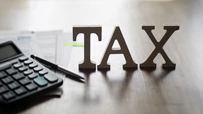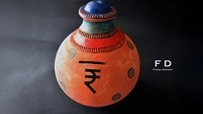Fixed Deposit Receipts Explained
Disclaimer: The information provided herein is generic in nature & for illustration purposes only. Please contact Ujjivan SFB for details regarding FD receipts.
September 09, 2025

Fixed Deposit Receipts—ever wondered what they are all about? Commonly known as FDRs, these documents act as a legal proof of your Fixed Deposit investment with the bank. manage or initiate fixed deposits, This post aims to demystify the FD receipts.
Helping you understand their importance, components, and the role they play in your financial planning. In this blog, we have explored everything - from the basics of FD Receipt understanding to practical tips on managing and leveraging these for better financial efficiency.
What are Fixed Deposit Receipts?
Fixed Deposit Receipts (FDRs) are formal documents provided by banks to investors upon opening a Fixed Deposit account. They are legally binding and detail your investment and serve as proof of the deposit.
Consider this analogy: think of an FD receipt as a ticket for a future financial journey—it outlines the destination (maturity), the route (terms), and the potential enjoyment at the end (returns).
Decoding the Components of Fixed Deposit Receipts
Here's what typically features in an FD receipt:
1. Rate of Interest on the FD:
The receipt specifies the interest rate applicable to your deposit. It is important to verify this rate, especially during renewal, as interest rates can fluctuate over time.
2. Scheme Maturity and Auto-Renewals:
The maturity date is clearly stated on the receipt. This date is critical for financial planning purposes. If you have chosen auto-renewal, ensure to check the renewal period mentioned on the receipt.
3. Charges on the FD:
Some banks impose penalties for premature withdrawals. Some FDs come with specific fees and charges. These charges are mentioned in the receipt.
4. Nomination Facility:
The receipt includes details of the nominee who will receive the FD amount in case of the depositor's demise.
5. Type of Deposit:
FDRs specify whether the deposit is cumulative (interest is reinvested) or non-cumulative (interest is paid out periodically).
6. Maturity Amount:
The receipt indicates the interest earned and the total maturity amount payable by the bank.
7. Account Holder Details:
It includes your customer ID and bank account number, ensuring all personal banking information is accurate.
Importance of Fixed Deposit Receipts
FDRs aren't just paperwork; they have practical applications in everyday finance:
1. Securing Loans:
Banks often accept FD receipts as collateral for loans. Imagine leveraging a fixed asset without liquidation—keeping your investment intact while addressing immediate cash needs.
2. Renewal and Withdrawals:
For renewals, banks require your FDR to update terms or extend periods.
3. Proof of Investment:
In any dispute or claim regarding deposited funds, your receipt is proof that safeguards your interests.
Modern Digital Access to Fixed Deposit Receipts
In today’s digital age, accessing your FDR online through internet banking has made monitoring investments straightforward and efficient. This shift enhances convenience but also demands that we stay vigilant about digital security practices.
Benefits of Digitising Your FD Receipt
Final Thoughts
Fixed Deposit Receipts are more than just pieces of paper—they are keys to unlocking numerous financial possibilities while ensuring security and peace of mind for investors. By understanding how these FD receipts function and applying our insights on efficiently managing them, you can optimise your investments significantly.
Looking to grow your savings? Ujjivan SFB offers a wide range of fixed deposit products. Select the FD of your choice and take a step forward to your financial goals. Alternatively, you can browse through Ujjivan SFB product suite - our wide range of financial products are designed to make your financial life better.
Disclaimer:
The contents herein are only for informational purposes and generic in nature. The content does not amount to an offer, invitation or solicitation of any kind to buy or sell, and are not intended to create any legal rights or obligations. This information is subject to updation, completion, amendment and verification without notice. The contents herein are also subject to other product-specific terms and conditions, as well as any applicable third-party terms and conditions, for which Ujjivan Small Finance Bank assumes no responsibility or liability.
Nothing contained herein is intended to constitute financial, investment, legal, tax, or any other professional advice or opinion. Please obtain professional advice before making investment or any other decisions. Any investment decisions that may be made by the you shall be at your own sole discretion, independent analysis and evaluation of the risks involved. The use of any information set out in this document is entirely at the user’s own risk. Ujjivan Small Finance Bank Limited makes no representation or warranty, express or implied, as to the accuracy and completeness for any information herein. The Bank disclaims any and all liability for any loss or damage (direct, indirect, consequential, or otherwise) incurred by you due to use of or due to investment, product application decisions made by you on the basis of the contents herein. While the information is prepared in good faith from sources deemed reliable (including public sources), the Bank disclaims any liability with respect to accuracy of information or any error or omission or any loss or damage incurred by anyone in reliance on the contents herein, in any manner whatsoever.
To know more about Ujjivan Small Finance Bank Products Visit:"https://www.ujjivansfb.in"
All intellectual property rights, including copyrights, trademarks, and other proprietary rights, pertaining to the content and materials displayed herein, belong
to Ujjivan Small Finance Bank Limited or its licensors. Unauthorised use or misuse of any intellectual property, or other content displayed herein is strictly prohibited and the same is not intended for distribution to, or use by, any person in any jurisdiction where such distribution or use would (by reason of that person’s nationality, residence or otherwise) be contrary to law or registration or would subject Ujjivan Small Finance Bank Limited or its affiliates to any licensing or registration requirements.
FAQs
1. What is the nomination process for FD?
At the time of account opening, you are required to provide nominee details, including name, date of birth, relationship and contact details. These details are available on your FD receipt. Check with your bank for further details.
2. How often should I review my Fixed Deposit Receipt?
Reviewing once per year or anytime there’s a significant financial change ensures that all details remain accurate and relevant according to current needs.
3. What happens if I lose my physical FD receipt?
Notify your bank immediately they’ll provide steps for issuance replacement while ensuring that your funds remain secure.
4. Is a Fixed Deposit Receipt transferable?
No, a Fixed Deposit Receipt is non-transferable and cannot be given to another person. However, the funds can be transferred to another account upon maturity or during a premature withdrawal.
Latest Blogs

How to Link PAN with Aadhaar: Step-by-Step Guide & Consequences of Not Linking
Linking your Permanent Account Number (PAN) with your Aadhaar is no longer just a best practice.

Annual Information Statement (AIS): A Complete Guide for Stress-Free ITR Filing
India’s tax season is in its final stretch.

ITR-1 (Sahaj) Restrictions: Income Sources Not Allowed & Filing Rules
With just a few days left before the 15 September 2025 deadline for filing Income Tax Returns (ITRs) for Assessment Year (AY) 2025-26, many taxpayers are rushing to submit their forms online.

GST Rate Cut on Electronics: What It Means for Consumers and Retailers
India’s Goods and Services Tax (GST) system has entered a new era with the rollout of GST 2.0, effective from September 22, 2025.

Banking Safety Guide: How to Avoid QR Code Frauds While Making Payments
India’s love for QR code payments has made transactions lightning-fast, but also opened a new front for cybercriminals.





